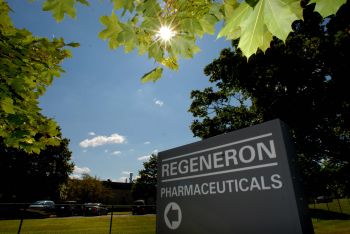
Phase III boost for alirocumab
pharmafile | October 17, 2013 | News story | Sales and Marketing | LDL, Regeneron, alirocumab
Sanofi and Regeneron Pharmaceuticals are celebrating some upbeat data from their investigational treatment alirocumab, which has proved adept at tackling ‘bad’, or LDL, cholesterol (LDL-C).
In topline results from the Phase III ODYSSEY MONO trial, the drug reduced LDL-C three times more than ezetimibe – which Merck markets as Ezetrol, and is an alternative to statins.
It is the first time a drug targeting PCSK9 (proprotein convertase subtilisin/kexin type 9) – a new class of lipid-lowering agents – has made it to Phase III, and the companies are conducting extensive studies which take in 23,000 patients.
“While the majority of our clinical programme is investigating alirocumab in combination with lipid-lowering therapies, these monotherapy results are encouraging,” said Jay Edelberg, head of Sanofi’s PCSK9 Development and Launch Unit.
Various patient populations, combinations and different doses are being tried in a dozen studies, but here the drug – administered subcutaneously every two weeks – met its primary efficacy endpoint.
Mean LDL-C reduction from baseline to week 24 was far higher in patients taking alirocumab (47.2%) than in those on Ezetrol (15.6 per cent).
Patients who did not have an LDL-C level of 70mg/deciliter (mg/dL) after week eight were given an increased dose to 150mg – but most stayed on the starting dose of alirocumab (75mg).
“There are still millions of people around the globe who have poorly controlled LDL-C,” said George Yancopoulos, Regeneron’s chief scientific officer.
“Three years ago, our Phase I trials generated the first clinical evidence that blocking PCSK9 could markedly lower cholesterol levels in humans,” he added. “It is important to point out that these are just the first of a large amount of data yet to come from our extensive ODYSSEY Phase III programme.”
Analysts have suggested that the drug could make as much as $3 billion at its peak, but there is a long way to go – and Sanofi and Regeneron are not the only ones to see the potential of PCSK9 inhibitors: Amgen, with AMG 145, and Pfizer are among their rivals.
PCSK9 binds to LDL receptors, which means fewer of them are on liver cells to remove excess LDL-C from the blood, and blocking them – rather than stimulating them, as statins do – represents a potential novel mechanism of treatment.
Among the other ODYSSEY trials are ones looking specifically at a regimen of 150 mg every two weeks as well as alirocumab given once every four weeks.
Adam Hill
Related Content

Regeneron and Mammoth Biosciences announce CRISPR collaboration
Regeneron Pharmaceuticals and Mammoth Biosciences have announced a collaboration for the research, development and commercialisation …

FDA accepts BLA for Regeneron’s linvoseltamab for Priority Review
Regeneron Pharmaceuticals has announced that the US Food and Drug Administration (FDA) has accepted its …

Regeneron’s linvoseltamab gains EMA filing acceptance for R/R MM treatment
Regeneron Pharmaceuticals has announced that the European Medicines Agency (EMA) has accepted for review its …








